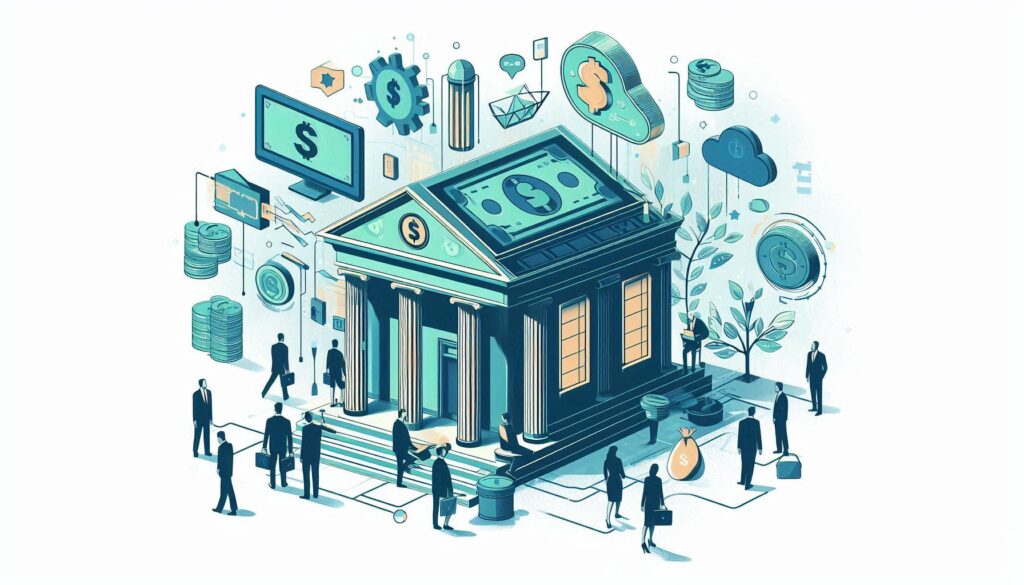Financial transparency is becoming increasingly important in modern banking, shaping the future of banking services in the United States. As consumers demand more openness and clarity, financial institutions are adapting to ensure they meet these expectations.
This trend towards transparent operations is not just a passing fad; it’s an essential shift that is redefining how banks operate and interact with clients. From increased disclosure requirements to the rise of fintech, the banking landscape is undergoing a transformation that emphasizes clearer communication and accountability.
The role of transparency in modern banking

Openness in banking is not just beneficial for consumers but also for the institutions themselves. As financial institutions embrace transparency, they foster trust and loyalty among customers. By providing clear and honest information, banks can reduce instances of fraud and mismanagement that have plagued the industry in the past.
More transparent banking practices allow consumers to make better-informed decisions about their finances, enhancing their overall experience. This approach also drives competition among banks, compelling them to offer better services and products. Ultimately, this growing expectation for transparent dealings is setting a new standard in the financial sector.
The impact of regulatory changes
Regulatory bodies in the United States have been key drivers in increasing transparency within the financial sector. In recent years, numerous regulations have been implemented to ensure banks disclose more information to their clients. The Dodd-Frank Wall Street Reform and Consumer Protection Act is one such regulation that has had a significant impact.
It aims to reduce risk in banking operations by increasing oversight and transparency. Furthermore, the Consumer Financial Protection Bureau (CFPB) mandates clear disclosure of fees and interest rates, empowering consumers to make informed financial decisions. These regulations are not only safeguarding consumers but also stabilizing the banking industry.
The influence of technology in transparency
The rise of fintech companies has been pivotal in promoting transparency within the banking sector. These tech-driven enterprises offer innovative solutions that provide users with real-time access to their financial data. Mobile banking apps, for instance, enable consumers to track transactions, monitor spending, and manage accounts effortlessly, ensuring they are always informed.
Moreover, blockchain technology offers an immutable and transparent ledger system that enhances security and trust. By leveraging these technological advancements, banks can offer unparalleled transparency, setting a new benchmark in client communications. Technology, therefore, not only facilitates transparency but also enhances customer satisfaction and loyalty.
Building customer trust through transparency
Establishing trust is crucial in the banking industry, and transparency is key to achieving it. In an era where consumers are more informed and empowered than ever, banks must go above and beyond to maintain their trust. Open, honest communication about products, fees, and company policies can eliminate skepticism and build a trustworthy relationship with clients.
When consumers trust their banks, they are more likely to engage in long-term relationships and utilize a broader range of services. Transparent practices not only boost customer confidence but also enhance the institution’s reputation, leading to a competitive advantage in the market.
The benefits of transparent communication
Transparent communication offers numerous advantages, both for banks and their customers. By providing honest and direct communication, banks can avoid misunderstandings and disputes that often arise from hidden fees or complex terms. This openness helps consumers understand exactly what they can expect, leading to fewer complaints and increased satisfaction.
Additionally, transparent communication allows banks to align their services with consumer needs more effectively, promoting better customer service and fostering loyalty. For banks, embracing transparency can lead to enhanced customer relationships, increased loyalty, and a positive brand image, ultimately contributing to sustained business success.
The future outlook for transparent banking
The future of banking services in the U.S. is undoubtedly moving towards even greater transparency. As technology continues to evolve and consumer demands grow, financial institutions will need to adapt continuously. The integration of artificial intelligence and big data can provide banks with deeper insights into consumer behavior, allowing for a more customized and transparent service offering.
With regulatory bodies likely to impose stricter transparency guidelines, banks will need to remain ahead of the curve to stay compliant and competitive. This shift towards openness is paving the way for a more efficient, customer-centric banking industry, where transparency is not just a requirement but a foundation for success.
